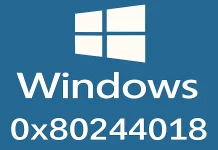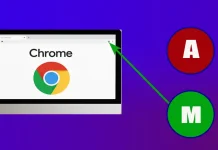One of the key features of Samsung Pay is the ability to access it quickly and easily by swiping it up from the home screen or lock screen. However, if you find this feature distracting or accidentally trigger it often, you may want to turn it off. Doing this in the Samsung Wallet app is easy, and you can use alternative ways to access Samsung Pay.
How to disable Samsung Pay swipe up
If you find Samsung Pay swipe-up gesture distracting or accidentally trigger it often, you can turn it off on your Samsung device. Here are the detailed steps to disable Samsung Pay swipe-up in two ways:
Turning off Samsung Pay swipe-up via the app setting
- Go to your device’s home screen and open the Samsung Pay app.
- Once the app is open, tap the three horizontal lines in the top left corner to access the menu.
- From the menu, tap “Settings” It looks like a gear icon button.
- In the Samsung Pay settings menu, scroll down until you see the option “Quick access and default card.” This feature lets you quickly access your favorite cards by swiping them from the home or lock screens.
- To turn off this feature and disable Samsung Pay, swipe up and toggle the switch to the off next to the “Lock Screen”, “Home Screen,” and “Screen off” positions.
Completely disable Samsung Pay
If you want to disable Samsung Pay and remove it from your device completely, you can do so through your device’s settings menu:
- Go to “Settings” and then tap on “Apps.”
- Find the Samsung Pay app in the list of installed apps, and then tap on it.
- From there, tap “Disable” or “Delete” to disable the app completely.
In conclusion, there are several ways to disable Samsung Pay swipe-up on your Samsung device. You can turn off Quick Access and the default card in Samsung Pay settings or disable Samsung Pay completely through the device’s settings menu. By following these steps, you can customize your device to suit your needs and preferences better.
How to set up Samsung Pay on the side button
If Samsung Pay swipe-up isn’t right for you and you find this feature too distracting, then you can put a Samsung Pay call on a double tap on the side lock button. Apple Pay works the same way on iPhones. To do this, you need to:
- Open the Settings app on your Samsung device.
- Scroll down and select “Advanced features” from the list of options.
- Select “Side key” from the Advanced features menu.
- Scroll down to the “Double press” section, and from the list of available options, select “Samsung Pay.”
- Double-press the side button to test the shortcut.
By following these steps, you can customize the side button on your Samsung device to launch Samsung Pay, allowing you to make payments quickly and conveniently with just a double press of the button.
How to set up Samsung Pay as a Lock Screen shortcut
If you prefer to have the option to launch Samsung Pay from your lock screen without using the swipe-up gesture, you can set up Samsung Pay as a lock screen shortcut. Here are the steps to do so:
- Open the Settings app on your Samsung device.
- Scroll down and select “Lock screen” from the list of options.
- Tap on “Shortcuts” from the Lock screen menu.
- Tap on the shortcut you want to change.
- From the list of available options, select “Samsung Pay.”
Once you have set up Samsung Pay as a lock screen shortcut, test it out to make sure it works correctly. Lock your device and swipe left or right to access the shortcut you have customized to Samsung Pay. This will allow you to launch the app quickly and easily from your lock screen.
What is the Samsung Pay feature?
Samsung Pay is a mobile payment service developed by Samsung Electronics. It allows users to make payments using their Samsung devices, including smartphones and smartwatches, at a variety of retailers and merchants.
Samsung Pay uses a combination of Near Field Communication (NFC) technology and Magnetic Secure Transmission (MST) technology to make payments. NFC technology is used to make contactless payments, while MST technology allows users to make payments at traditional credit card terminals that do not have NFC capabilities. This makes Samsung Pay compatible with a wider range of payment terminals than other mobile payment services that rely solely on NFC technology.
To use Samsung Pay, users must first add their credit or debit card information to the app. This can be done by scanning the card with the device camera or manually entering the information. Once the card is added, users can make payments by opening the Samsung Pay app, selecting the card they want to use, and holding their device near the payment terminal. For terminals without NFC capabilities, users can hold their device near the magnetic stripe reader to make the payment using MST technology.
In addition to making payments, Samsung Pay also offers users the ability to store and redeem rewards points and coupons from participating merchants. Users can also view their transaction history and manage their cards and payment methods within the app.
What are the differences between Samsung Pay and Google Pay?
Samsung Pay and Google Pay are both mobile payment services that allow users to make payments using their smartphones. While they offer similar functionality, there are some differences between the two services.
Compatibility
One of the key differences between Samsung Pay and Google Pay is their compatibility with payment terminals. Samsung Pay uses both Near Field Communication (NFC) and Magnetic Secure Transmission (MST) technology, allowing it to be used at a wider range of payment terminals than Google Pay, which only uses NFC technology. This means that Samsung Pay may be a better option for users who frequently encounter payment terminals that do not support NFC. However, the latest Samsung Galaxy S23 series lacks the feature.
Device Compatibility
Another difference is in device compatibility. Samsung Pay is only available on Samsung devices, including smartphones and smartwatches. Google Pay, on the other hand, is available on a wider range of Android devices, as well as on iOS devices. This means that users who do not have a Samsung device may prefer to use Google Pay.
Integration with Other Google Services
Google Pay offers integration with other Google services, such as Google Wallet and Google Assistant. This allows users to send and receive money from their contacts, as well as use voice commands to make payments. Samsung Pay, on the other hand, is more focused on in-store payments and does not offer these additional features.
Rewards and Coupons
Samsung Pay offers the ability to store and redeem rewards points and coupons from participating merchants, while Google Pay does not currently offer this feature. This can make Samsung Pay a more attractive option for users who frequently shop at participating merchants.
Security
Both Samsung Pay and Google Pay offer advanced security features to protect user information and prevent fraud. However, Samsung Pay’s use of MST technology may provide an added layer of security, as it allows users to make payments without transmitting their actual card number to the payment terminal.
In summary, while Samsung Pay and Google Pay offer similar functionality, there are some differences in compatibility, device compatibility, integration with other services, rewards and coupons, and security features. Users should consider their individual needs and preferences when choosing between the two services.





